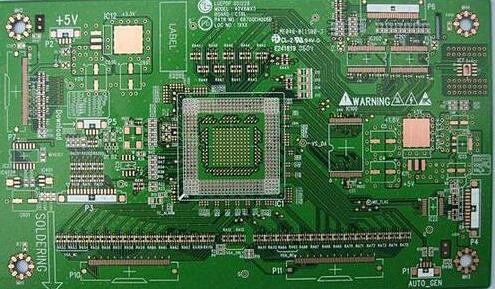Explain the reflow process of PCBA solder paste in detail
When PCBA solder paste is in a heated environment, PCBA solder paste reflow is divided into five stages.
First of all, the solvent used to achieve the required viscosity and screen printing performance begins to evaporate, and the temperature rise must be slow (about 3°C per second) to limit boiling and splashing and prevent the formation of small tin beads. In addition, some components are relatively internally stressed. Sensitive, if the external temperature of the component rises too fast, it will cause breakage.
The flux is active, and the chemical cleaning action starts. The water-soluble flux and no-clean flux will have the same cleaning action, but the temperature is slightly different. Remove metal oxides and certain contaminants from the metal and solder particles to be bonded. Good metallurgical tin solder joints require "clean" surfaces.
When the temperature continues to rise, the solder particles first melt individually and begin the "dung grass" process of liquefaction and surface tin absorption. This covers all possible surfaces and starts to form solder joints.
This stage is the most important. When the individual solder particles are all melted, they are combined to form liquid tin. At this time, the surface tension starts to form the surface of the solder foot. If the gap between the component pin and the PCB pad exceeds 4 mils, it is most likely due to surface tension. Separating the pin and the pad will cause an open circuit at the tin point.

In the cooling stage, if the cooling is fast, the tin point strength will be slightly larger, but it should not be too fast to cause temperature stress inside the component.
Summary of reflow soldering requirements:
It is important to have sufficient slow heating to safely evaporate the solvent, prevent the formation of tin beads and limit the internal stress of the component due to temperature expansion, which causes the reliability of the fracture mark.
Secondly, the active phase of the flux must have an appropriate time and temperature, allowing the cleaning phase to be completed when the solder particles just begin to melt.
The solder melting stage in the time-temperature curve is the most important. The solder particles must be fully melted and liquefied to form metallurgical soldering. The remaining solvent and flux residues evaporate to form the surface of the solder foot. If this stage is too hot or too long, it may cause damage to the components and PCB.
The setting of the PCBA solder paste reflow temperature curve is best carried out according to the data provided by the PCBA solder paste supplier, while grasping the principle of internal temperature stress change of the component, that is, the heating temperature rise rate is less than 3°C per second, and the cooling temperature drop rate Less than 5°C.
If the size and weight of the PCB assembly are very similar, the same temperature profile can be used.
It is important to check whether the temperature curve is correct or not frequently or even daily.